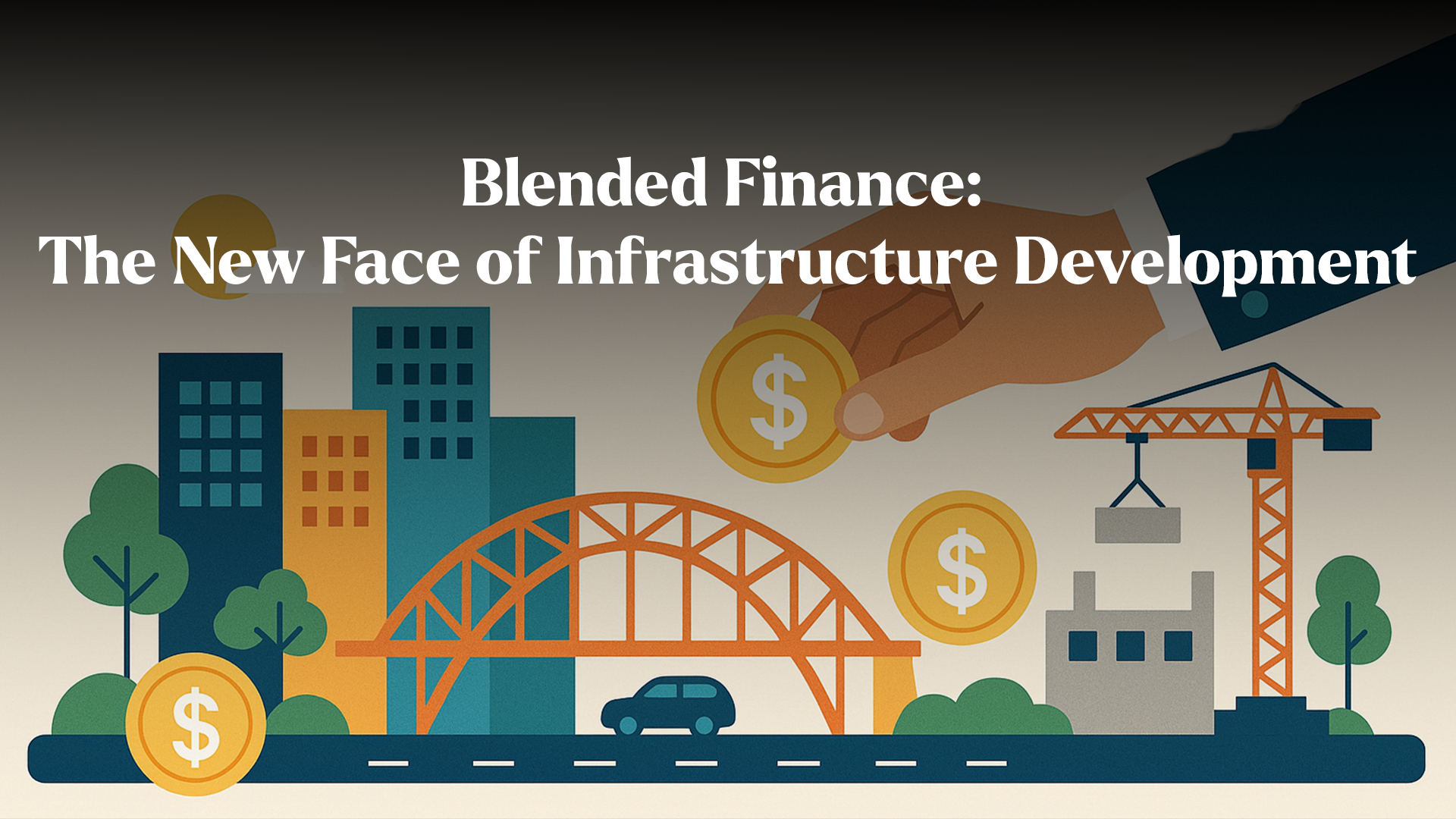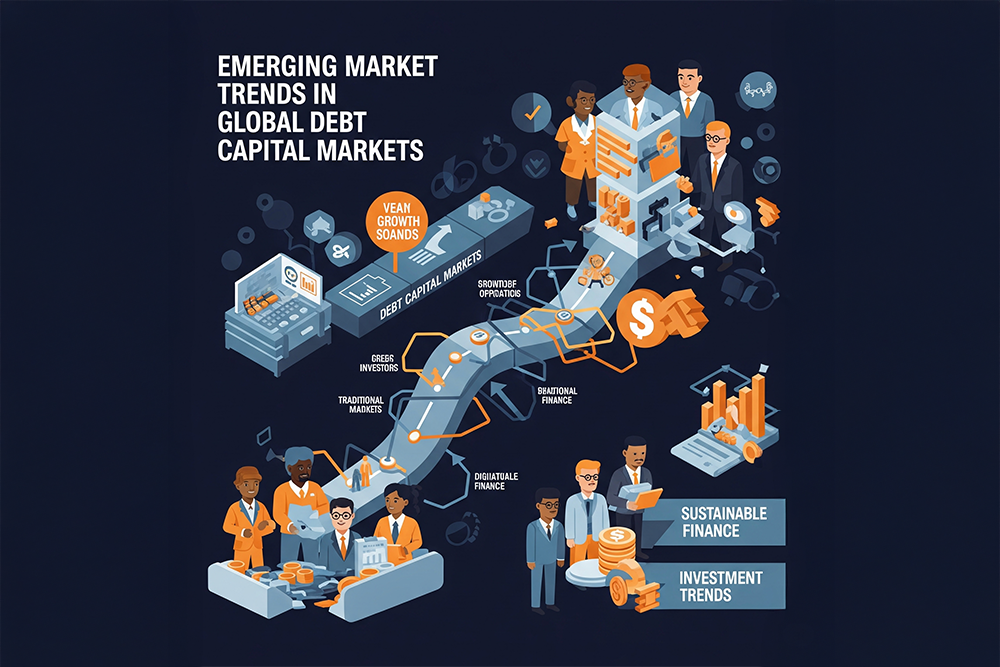In an era of addressing climate objectives, population growth, and an increasingly wide infrastructure deficit, conventional funding streams are no longer sufficient. Governments cannot bear the weight alone, and private investors require more robust risk-adjusted incentives to participate. Step in blended finance—a tool that is rapidly emerging as the keystone of infrastructure development in the developing markets.
Here, we break down the role of blended finance in transforming capital deployment, its increasing popularity among institutional investors, and how it's becoming a main topic of discussion at infrastructure and capital markets conferences around the world
What Is Blended Finance and Why Does It Matter?
Blended finance is the strategic application of concessional capital—usually from development finance institutions (DFIs) or philanthropists—to mobilise commercial investment into projects that provide financial return as well as quantifiable social or environmental outcomes.
In contrast with pure public or private financing, blended finance brings together multiple stakeholders through disciplined layering of risk and returns. This approach makes high-impact infrastructure projects, previously considered too risky or uneconomical to be investable.
Why Institutional Investors Are Turning to Blended Finance
-
De-risking Market Entry
Blended finance is a way for pension funds, sovereign wealth funds, and insurance companies to enter the frontier markets while avoiding downside exposure. Concessional capital takes initial losses or provides certain returns, making commercial investors feel comfortable investing.
-
A Natural Fit for ESG Mandates
Blended finance follows closely on the heels of ESG and impact investing frameworks. Projects tend to be focused on UN Sustainable Development Goals (SDGs), like clean energy, clean water, or sustainable transport, making them compelling additions to forward-thinking portfolios.
-
Unlocking Scale in Emerging Markets
Emerging markets are huge opportunities—but also profound complexities. Blended finance is a bridge, using public and philanthropic capital to bring billions of dollars of private capital into play, especially in infrastructure, health, and climate resilience.

Blended Finance at the Heart of Capital Markets Events
The boom in interest in blended finance is evident in its increasing visibility at infrastructure summits, impact investing forums, and international debt market events. Parties are gathering to discuss co-investing opportunities, novel structuring methods, and the mobilisation of long-term capital at scale.
At Global Banking and Markets, we witness these interactions occurring in real time, with DFIs, asset managers, institutional allocators, and project sponsors all coming together in the same location. These are not mere conversations—they're platforms for collaboration and action.
Priority Sectors Driving Blended Finance Adoption
Green Infrastructure
From solar parks and wind farms to grid modernisation, climate-centric infrastructure is leading the charge. Blended finance frameworks facilitate a reduction in initial capital risk, enabling projects to achieve bankability more quickly.
Water and Sanitation
Urbanisation is putting unprecedented pressure on water supply and sanitation systems. Concessional finance is mobilising DFIs and multilateral institutions to crowd in private sector participants who can scale solutions and enhance living standards.
Transport & Logistics
Blended finance is paving the way for investment in rail, ports, and urban transport, which are essential to trade and regional integration. Long tenors, layered capital, and performance subsidies are key to structuring these transactions.
A Quick Snapshot: Blended Finance Compared to Traditional Infrastructure Financing
|
Aspect |
Traditional Financing |
Blended Finance |
|
Primary Funders |
Governments, Multilaterals |
DFIs + Institutional Investors |
|
Risk Mitigation |
Limited |
Structured Risk Absorption |
|
Project Types |
Mature, Low-Risk |
High-Impact, Frontier |
|
Return Profile |
Fixed, Lower Risk |
Tiered, Higher Potential |
|
Appeal to Institutions |
Moderate |
Growing Stronger |
|
SDG Alignment |
Indirect |
Strongly Embedded |
Challenges in Blended Finance Implementation
Though promising, blended finance is not without rough edges:
Complex Structuring: Transactions frequently involve multilateral coordination, legal tailoring, and bespoke risk tranching.
Measurement and Accountability: Impact metrics, ESG benchmarks, and reporting transparency are a work in progress.
Policy and Political Risk: Failing institutions or poor local governance can stop projects in their tracks.
Nevertheless, all these challenges are being met squarely at capital gatherings, where stakeholders are aligning incentives and establishing confidence through common frameworks.

Looking Ahead: The Future of Blended Finance 2.0
Blended finance is changing, and we foresee some characteristic shifts:
Digital Platforms for Deal Origination: Fintech-enabled marketplaces will facilitate seamless access to deals for institutional investors.
Increased Local Capital Mobilisation: Emerging market domestic pension funds and insurers are now beginning to co-invest together with global players.
Support and Harmonisation by Regulators: International policy frameworks are beginning to support blended finance more officially under capital adequacy and impact investing regulations.
New Thematic Focuses: In addition to climate and infrastructure, blended finance is now being thought about in terms of digital public goods, agritech, and housing affordability.
Blended Finance Is the Future of Infrastructure Capital
As institutional investors pursue purpose-driven returns and emerging economies require funding for large-scale development, blended finance is turning out to be a game-changer. It's not only a funding technique—it's a strategic reimagining of how to build infrastructure, fund it, and keep it going.
Power Your Capital Strategy with Global Banking and Markets
We are not merely a platform at Global Banking and Markets—we are the world's capital, ideas, and people connector.
We are the global leader in emerging markets-focused financing events on a global level, hosting high-value interactions and stimulating deal flow. We consolidate the complexities of capital markets under one roof, allowing decision-makers to establish key partnerships.
From structured debt to blended finance and long-term capital formation, we deliver the access and insight that institutional investors require to make informed, confident, and strategic decisions.
Let us link you to the opportunities shaping tomorrow's capital markets.
Partner with Global Banking and Markets—where intelligent capital meets tangible results.
We are the world leader in global markets-focused financing events in emerging markets. We bring complex markets together in one place at one time, facilitate informal networking & organise meetings which accelerate deal-flow. Connecting you with business partners and counterparties is at the heart of everything we do.
.png)



